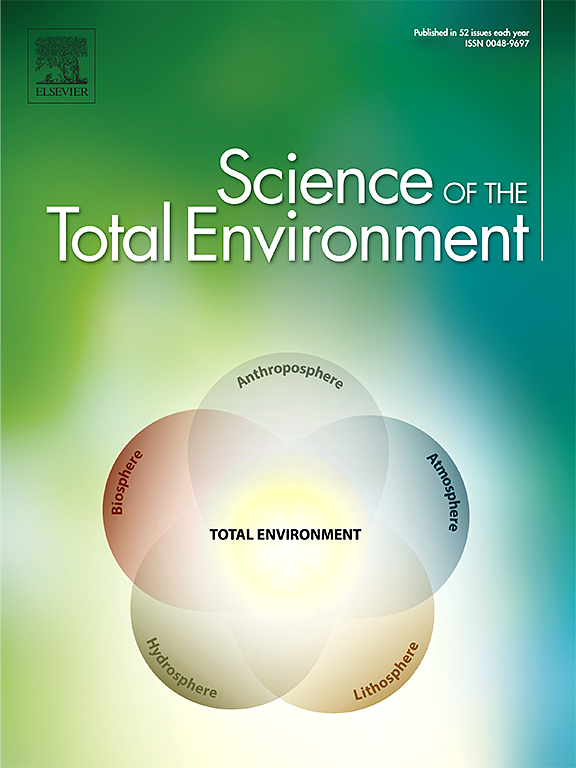Water characteristics and retention in Angkor sandstone monuments and their linkage with microorganisms responsible for ammonia oxidation and nitrate accumulation
IF 8
1区 环境科学与生态学
Q1 ENVIRONMENTAL SCIENCES
引用次数: 0
Abstract
Water availability in built environment, including heritage, plays a fundamental role in microbial colonization and subsequent biodeterioration. However, it is uncertain about the relationship between specific water characteristics and microbial development. Here, we applied water intrusion gravimetry (WIG) to quantify water distribution and then linked it to microbial growth by combining molecular biology techniques and petrophysical and mineralogical analyses. Porosity as well as capillary, gravitational, and saturation waters were distinctly increased in the monument stones compared to the adjacent quarry fresh sandstone. Archaea and bacteria, responsible for ammonia-oxidizing archaea (AOA), nitrite-oxidizing bacteria (NOB) and Comammox species were enriched with increasing capillary water mainly, and intriguingly, the copies of bacterial 16S rRNA and Comammox amoA genes were positively correlated with capillary water significantly (r2 = 0.73, p < 0.001) and inversely correlated with gravitational water (r2 = 0.60, p < 0.01). An important finding for the enlargement of the pores in the monuments was the dissolution of calcite and oxides from the sandstone by HNO3 erosion simulation. Collectively, these findings advance our understanding of water status in the pores of monuments and provide new insights into mechanisms of biofilm formation and preventive measures against microbial issues and biodeterioration.

吴哥砂岩遗迹的水特征和保留及其与氨氧化和硝酸盐积累的微生物的联系
包括遗产在内的建筑环境中的水可用性在微生物定植和随后的生物退化中起着重要作用。然而,具体的水特征与微生物发育之间的关系尚不确定。在这里,我们应用水侵入重力法(WIG)来量化水的分布,然后通过结合分子生物学技术和岩石物理和矿物学分析将其与微生物生长联系起来。与邻近采石场的新鲜砂岩相比,纪念碑石的孔隙度、毛细管水、重力水和饱和水明显增加。氨氧化古菌(AOA)、亚硝酸盐氧化菌(NOB)和Comammox等古菌和细菌主要随着毛细水的增加而富集,细菌16S rRNA和Comammox amoA基因拷贝数与毛细水呈显著正相关(r2 = 0.73, p <;0.001),与重力水呈负相关(r2 = 0.60, p <;0.01)。通过HNO3侵蚀模拟,发现了方解石和砂岩氧化物的溶解作用。总的来说,这些发现促进了我们对纪念碑孔隙中水分状况的理解,并为生物膜的形成机制和微生物问题和生物退化的预防措施提供了新的见解。
本文章由计算机程序翻译,如有差异,请以英文原文为准。
求助全文
约1分钟内获得全文
求助全文
来源期刊

Science of the Total Environment
环境科学-环境科学
CiteScore
17.60
自引率
10.20%
发文量
8726
审稿时长
2.4 months
期刊介绍:
The Science of the Total Environment is an international journal dedicated to scientific research on the environment and its interaction with humanity. It covers a wide range of disciplines and seeks to publish innovative, hypothesis-driven, and impactful research that explores the entire environment, including the atmosphere, lithosphere, hydrosphere, biosphere, and anthroposphere.
The journal's updated Aims & Scope emphasizes the importance of interdisciplinary environmental research with broad impact. Priority is given to studies that advance fundamental understanding and explore the interconnectedness of multiple environmental spheres. Field studies are preferred, while laboratory experiments must demonstrate significant methodological advancements or mechanistic insights with direct relevance to the environment.
 求助内容:
求助内容: 应助结果提醒方式:
应助结果提醒方式:


